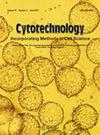circRNA OMA1/miR-654-3p/RAF1轴在儿童炎症性肠病中的作用机制
摘要
炎症性肠病(IBD)是一种慢性胃肠道疾病,通常在儿童时期出现,由于其对生长、发育和社会心理健康的不利影响,给儿童带来了巨大的挑战。环状 RNA(circRNA)与多种疾病的发病机制有关。然而,circRNA OMA1 在儿童 IBD 中的具体生物学作用和机制在很大程度上仍未得到探索。本研究探讨了circRNA OMA1在IBD进展过程中的功能和机制途径。研究采用实时定量 PCR(qRT-PCR)技术定量检测了 IBD 儿童血清和 HT-29 细胞中 circRNA OMA1 和 miR-654-3p 的表达水平。利用 StarBase 预测了 circRNA OMA1 的下游 miRNA 和 mRNA 靶点,并通过荧光素酶报告实验进行了验证。通过用 2% 右旋糖酐硫酸钠(DSS)处理人结肠上皮细胞系(HT-29),建立了体外 IBD 模型。细胞活力和细胞凋亡分别通过 MTT 试验和流式细胞术进行评估。细胞凋亡相关蛋白裂解Caspase-3的表达通过Western印迹法进行分析,促炎细胞因子(TNF-α、IL-1β和IL-6)的水平通过ELISA法进行测定。与健康对照组相比,IBD患儿血清和经DSS处理的HT-29细胞中circRNA OMA1的表达明显较低,而miR-654-3p的表达则上调。生物信息学分析表明,circRNA OMA1与miR-654-3p之间存在直接相互作用。在基础和DSS刺激条件下,通过质粒转染过表达circRNA OMA1可提高HT-29细胞中circRNA OMA1的水平并抑制miR-654-3p的表达。相反,转染 miR-654-3p 模拟物则可逆转这些效应。circRNA OMA1的上调通过提高细胞活力、减少细胞凋亡和下调裂解的caspase-3的表达,改善了DSS诱导的HT-29细胞损伤。此外,circRNA OMA1 的过表达抑制了炎性细胞因子 TNF-α、IL-1β 和 IL-6 的分泌。然而,用 miR-654-3p 模拟物处理后,这些保护作用被部分逆转。此外,miR-654-3p 还能直接靶向 RAF1,负向调节其表达。RAF1-siRNA 可减轻 miR-654-3p 抑制剂对细胞增殖和凋亡的抑制作用。结论通过调节 miR-654-3p/RAF1 轴,上调 circRNA OMA1 可减轻 DSS 诱导的结肠细胞凋亡和炎症。这些研究结果表明,circRNA OMA1可能是诊断和治疗IBD的一种有前景的生物标志物:在线版本包含补充材料,可在10.1007/s10616-025-00703-z上获取。Inflammatory bowel disease (IBD), a chronic gastrointestinal disorder, often emerges during childhood and poses significant challenges due to its adverse effects on growth, development, and psychosocial well-being. Circular RNAs (circRNAs) have been implicated in the pathogenesis of diverse diseases. However, the specific biological role and mechanisms of circRNA OMA1 in children with IBD remain largely unexplored. This study investigates the functions and mechanistic pathways of circRNA OMA1 in the progression of IBD. Quantitative real-time PCR (qRT-PCR) was employed to quantify circRNA OMA1 and miR-654-3p expression levels in the serum of children with IBD and in HT-29 cells. Downstream miRNA and mRNA targets of circRNA OMA1 were predicted using StarBase and validated via luciferase reporter assays. An in vitro IBD model was established by treating the human colonic epithelial cell line (HT-29) with 2% dextran sulfate sodium (DSS). Cell viability and apoptosis were assessed using the MTT assay and flow cytometry, respectively. Expression of the apoptosis-related protein cleaved caspase-3 was analyzed via western blotting, and proinflammatory cytokine levels (TNF-α, IL-1β, and IL-6) were measured using ELISA. The expression of circRNA OMA1 was notably lower in the serum of children with IBD and in DSS-treated HT-29 cells than in healthy controls, whereas miR-654-3p expression was upregulated. Bioinformatics analyses revealed a direct interaction between circRNA OMA1 and miR-654-3p. Overexpression of circRNA OMA1 through plasmid transfection increased circRNA OMA1 levels and suppressed miR-654-3p expression in HT-29 cells under both basal and DSS-stimulated conditions. Conversely, transfection with a miR-654-3p mimic reversed these effects. Upregulation of circRNA OMA1 ameliorated DSS-induced injury in HT-29 cells by enhancing cell viability, reducing apoptosis, and downregulating cleaved caspase-3 expression. Moreover, circRNA OMA1 overexpression inhibited the secretion of inflammatory cytokines TNF-α, IL-1β, and IL-6. However, these protective effects were partially reversed by treatment with the miR-654-3p mimic. Additionally, miR-654-3p was shown to directly target RAF1, negatively regulating its expression. The proliferation-promoting and apoptosis-suppressing effects of miR-654-3p inhibitor treatment were mitigated by RAF1-siRNA. Conclusion: Upregulation of circRNA OMA1 alleviates DSS-induced colonic cell apoptosis and inflammation by modulating the miR-654-3p/RAF1 axis. These findings suggest that circRNA OMA1 could be a promising biomarker for the diagnosis and treatment of IBD.
Supplementary information: The online version contains supplementary material available at 10.1007/s10616-025-00703-z.

 求助内容:
求助内容: 应助结果提醒方式:
应助结果提醒方式:


